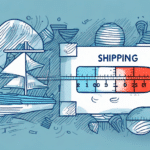Understanding UPS Shipping Rates by Dimensions
If you regularly ship packages with UPS, it's crucial to understand how package dimensions impact your shipping costs. This comprehensive guide explores UPS shipping rates based on dimensions, covering why dimensions matter, how to accurately measure your package, and tips for optimizing your packaging to minimize dimensional weight. Additionally, we discuss the role of UPS zones in shipping rates, selecting the appropriate UPS service level based on package dimensions, and common mistakes to avoid when shipping with UPS.
Why Dimension Matters in UPS Shipping Rates
UPS determines shipping costs based on either the actual weight or the dimensional weight of your package, whichever is greater. Dimensional weight is calculated using the package's size, reflecting the space it occupies in UPS trucks and planes. This pricing model ensures that larger packages, even if lightweight, contribute fairly to shipping costs. Understanding this can help you make informed decisions to reduce expenses.
It's important to note that UPS isn't the only carrier using dimensional weight. Both FedEx and USPS also incorporate this method, making package size a universal consideration when selecting a shipping carrier. For international shipments, different countries may have varying rules regarding dimensional weight, so always verify regulations before shipping.
For more detailed insights, refer to the UPS shipping rates guide.
How to Measure Your Package Dimensions Accurately
Accurate measurement of your package's dimensions is essential for correct shipping cost calculation. Follow these steps to measure your package:
- Use a reliable tape measure or ruler.
- Measure the length, width, and height of the package.
- Round up each measurement to the nearest whole inch.
- Multiply the length, width, and height to find the volume in cubic inches.
Most shipping calculators perform this calculation automatically, but precision is key as even minor discrepancies can significantly impact costs.
Different carriers may have specific guidelines for measurement. For example, some require measuring at the package's widest point, while others prefer the narrowest. Always consult your chosen carrier's measurement guidelines to ensure accuracy.
For irregularly shaped packages, such as cylinders or spheres, use the appropriate volume formulas. Most advanced shipping calculators accommodate these shapes, but double-check that the correct formula is applied.
The Impact of Weight and Dimension on UPS Shipping Costs
While weight is a primary factor in UPS shipping rates, dimensional weight often plays a more significant role for larger packages. A lightweight package with substantial dimensions may incur higher shipping costs than a heavier, compact one.
Destination also affects shipping costs. Shipping to remote or rural areas typically involves higher fees due to increased transportation distances and logistics challenges. Always consider the destination zone when calculating costs to choose the most economical shipping option.
UPS offers a variety of service levels, including ground, air, and international options. Each service type has its own pricing structure and delivery timeframe, so selecting the appropriate service based on your package's dimensions and delivery requirements can optimize both cost and efficiency.
How Dimensional Weight Works in UPS Shipping Rates
Dimensional weight is calculated by dividing a package's volume (in cubic inches) by UPS's dimensional factor. If the resulting dimensional weight exceeds the actual weight, UPS charges based on the dimensional weight. For example:
Formula: (Length x Width x Height) / Dimensional Factor
UPS typically uses a dimensional factor of 139 for domestic shipments. This means a package measuring 12" x 12" x 12" would have a dimensional weight of:
(12 x 12 x 12) / 139 ≈ 12.4 lbs
If the actual weight is 10 lbs, UPS will bill based on 12.4 lbs.
Different carriers use varying dimensional factors. For instance, FedEx employs a factor of 166, making their dimensional weight higher than UPS's for the same package size. Therefore, a package might exceed the dimensional weight threshold for UPS but not for FedEx.
To avoid unexpected costs:
- Accurately measure and weigh your packages before shipping.
- Use compact and lightweight packaging materials like bubble mailers or padded envelopes.
- Consider the shipping service's dimensional weight policies.
How to Calculate UPS Shipping Costs Using Dimensional Weight
Calculating UPS shipping costs using dimensional weight involves the following steps:
- Measure the length, width, and height of your package in inches.
- Calculate the volume: Length x Width x Height.
- Divide the volume by UPS's dimensional factor (139 for domestic shipments).
- Compare the dimensional weight to the actual weight and use the greater value for billing.
Example:
If your package measures 20" x 15" x 10" and weighs 25 lbs:
Volume = 20 x 15 x 10 = 3,000 cubic inches
Dimensional Weight = 3,000 / 139 ≈ 21.58 lbs
Since the actual weight (25 lbs) is greater, UPS will charge based on 25 lbs.
For the most accurate calculations, use UPS's shipping calculator.
The Difference Between Actual Weight and Dimensional Weight
Actual Weight is the product's weight measured with a scale. Dimensional Weight considers both the size and weight of the package. UPS charges based on the higher of the two to ensure cost recovery for large or bulky shipments that occupy more space during transportation.
To optimize shipping costs:
- Choose packaging that minimizes empty space.
- Use lightweight packing materials.
- Assess whether UPS Ground or another service offers better rates based on your package's weight and dimensions.
Always aim to select the shipping method that offers the lowest cost based on the greater value between actual and dimensional weight.
Tips for Optimizing Your Packaging to Minimize Dimensional Weight
Reducing dimensional weight can significantly lower your UPS shipping costs. Here are strategies to optimize your packaging:
- Use the Right Size Box: Select the smallest box that comfortably fits your items to eliminate unnecessary space.
- Lightweight Materials: Utilize materials like bubble wrap or polyethylene foam instead of heavier alternatives to reduce overall package weight.
- Efficient Packing: Arrange items tightly to minimize movement within the package, reducing the need for excessive packing materials.
- Flattenable Materials: Consider foldable or collapsible packaging options when possible.
- Regular Audits: Periodically review your packaging processes to identify areas for improvement and cost savings.
Implementing these practices not only reduces dimensional weight but also enhances the protective quality of your shipments.
Understanding the Role of UPS Zones in Shipping Rates by Dimensions
UPS divides shipping destinations into zones, ranging from Zone 1 (local shipments) to Zone 8 (long-distance or international shipments). The distance between the origin and destination zones directly affects shipping costs.
Key considerations:
- Zone 1-3: Typically involve shorter distances within the same state or region, resulting in lower shipping costs.
- Zone 4-6: Cover broader areas, including inter-state and some national shipments, with moderate shipping fees.
- Zone 7-8: Encompass cross-country and international destinations, often incurring the highest shipping costs.
When calculating UPS shipping rates, it's essential to account for the package's destination zone in addition to its weight and dimensions. This ensures accurate cost estimations and helps in selecting the most cost-effective shipping strategy.
How to Choose the Right UPS Service Level Based on Your Package Dimensions
Selecting the appropriate UPS service level involves balancing cost, delivery speed, and package dimensions. Here are common UPS services to consider:
- UPS Ground: Ideal for larger, heavier packages with a focus on cost-effectiveness. Suitable for shipments within the continental United States.
- UPS SurePost: Combines UPS's transportation network with the U.S. Postal Service for final delivery, offering lower rates for lightweight packages.
- UPS Next Day Air: Provides overnight delivery for urgent shipments, regardless of size, but typically at higher costs.
- UPS 2nd Day Air: Ensures delivery within two business days, balancing speed and cost for moderately urgent shipments.
When choosing a service level:
- Assess the urgency of the shipment.
- Consider the package's weight and dimensions.
- Evaluate destination zones.
- Review any service-specific restrictions or guidelines.
For detailed comparisons, visit the UPS service options on ShipScience.
Comparing UPS Shipping Rates by Dimensions Across Different Carriers
While UPS is a leading shipping carrier, comparing its rates and dimensional weight policies with other carriers like FedEx and USPS can lead to cost savings. Here are factors to consider when making comparisons:
- Dimensional Weight Factors: Different carriers use varying dimensional factors, affecting how dimensional weight is calculated.
- Service Offerings: Each carrier offers unique service levels with different speed and cost structures.
- Shipping Zones: The geographical distribution of zones and how they impact pricing vary among carriers.
- Additional Fees: Be aware of extra charges such as fuel surcharges, residential delivery fees, and oversized package fees.
- Discounts and Negotiated Rates: High-volume shippers may obtain discounts or customized rates from different carriers.
By conducting a thorough comparison, you can select the carrier that best fits your shipping needs based on package dimensions and overall shipping costs.
Common Mistakes to Avoid When Shipping by Dimensions with UPS
To ensure accurate shipping costs and efficient deliveries, avoid the following common mistakes when shipping with UPS:
- Inaccurate Measurements: Always double-check your package dimensions to prevent billing discrepancies.
- Ignoring Dimensional Weight: Even lightweight packages can be costly if they have large dimensions.
- Improper Packaging: Using oversized boxes or excessive packing materials can inflate dimensional weight.
- Not Considering Destination Zones: Shipping to higher zones without assessing cost implications can lead to unexpected fees.
- Selecting Inappropriate Service Levels: Choosing a faster service than necessary can result in higher costs.
- Overlooking Carrier-Specific Guidelines: Each carrier has its own measurement and packaging rules; adhering to them ensures smooth shipping processes.
Being mindful of these pitfalls helps in maintaining cost-effective and reliable shipping practices.
Understanding Additional Fees and Surcharges Related to Dimension-based Shipping with UPS
Beyond base shipping rates, UPS may apply additional fees and surcharges that can affect your total shipping cost:
- Residential Delivery Fees: Extra charges for delivering to residential addresses.
- Fuel Surcharges: Variable fees based on fluctuating fuel prices.
- Oversized Package Fees: Additional costs for packages that exceed standard size or weight limits.
- Saturday Delivery Fees: Charges for weekend delivery services.
- Insurance and Declared Value Fees: Costs for insuring the package or declaring a higher value.
It's crucial to review the full pricing details on the UPS website or consult with a UPS representative to understand all potential costs associated with your shipments. High-volume shippers might be eligible to negotiate better rates or waive certain fees based on their shipping volume and relationship with UPS.
How Technology is Changing the Landscape of Dimension-based Shipping with UPS
Advancements in technology are revolutionizing dimension-based shipping with UPS and other carriers. Innovative tools and software solutions are enhancing accuracy, efficiency, and cost-effectiveness in the shipping process:
- Automated Shipping Calculators: Tools that automatically calculate dimensional weight and suggest the most cost-effective shipping options.
- Package Optimization Software: Software that assists in designing optimal packaging layouts to minimize size and weight.
- Advanced Tracking Systems: Enhanced tracking technologies provide real-time updates and improve logistical planning.
- AI and Machine Learning: These technologies predict shipping patterns, optimize routes, and offer personalized shipping solutions.
Embracing these technologies can lead to significant savings and streamlined operations for businesses that frequently ship packages.
Tips for Negotiating Better Pricing for Dimension-based Shipping with UPS
High-volume shippers can negotiate better pricing for dimension-based shipping with UPS by following these strategies:
- Understand Your Shipping Needs: Analyze your shipping volume, package dimensions, and frequency to identify negotiation leverage.
- Research Competing Carriers: Compare rates and services from other carriers to use as benchmarks during negotiations.
- Consolidate Shipments: Grouping shipments can lead to volume discounts and reduced overall costs.
- Request Multiple Rate Quotes: Obtain and compare quotes from different UPS service levels to find the best fit.
- Consider Long-term Contracts: Committing to a long-term agreement can secure more favorable rates.
- Negotiate Additional Services: Bundling services like pickup or delivery options might result in cost savings.
By implementing these tips and maintaining a clear understanding of your shipping requirements, you can effectively negotiate terms that align with your business needs and budget.
For more information on negotiating shipping rates, visit the UPS SurePost benefits or explore other resources on ShipScience.




















